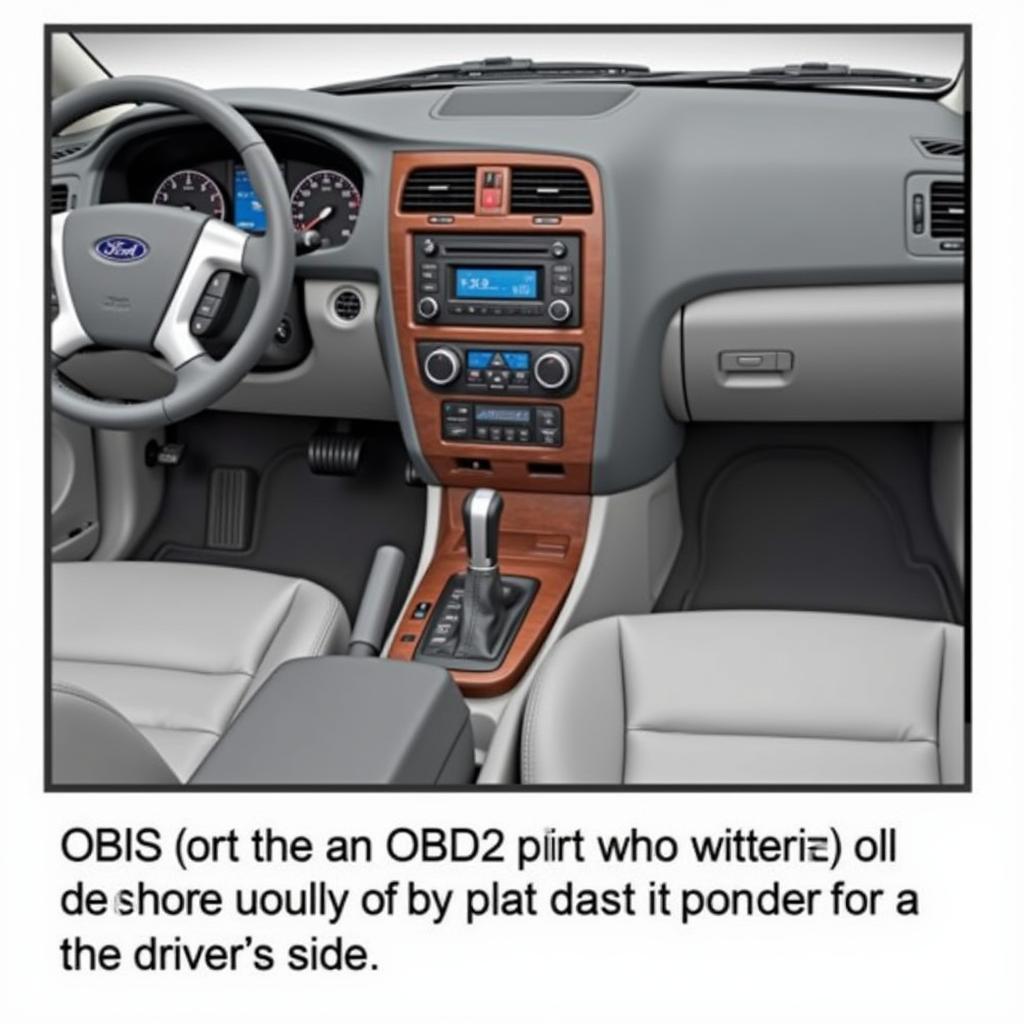Your cart is currently empty!

OBD1 vs OBD2 Wiki: Understanding the Key Differences
The evolution of automotive technology brought about standardized diagnostic systems, with OBD1 and OBD2 being the most recognized. While both systems aim to troubleshoot car problems, they differ significantly in their capabilities, functionalities, and the information they provide. Understanding these differences is crucial for mechanics and car owners alike, especially when dealing with vehicle diagnostics and repairs.
Delving into the World of On-Board Diagnostics
Before dissecting the nuances of OBD1 vs. OBD2, let’s clarify what OBD stands for and its significance in the automotive world. OBD stands for On-Board Diagnostics, a system that monitors your vehicle’s emission control systems and overall engine performance. It acts as a watchful guardian, alerting you to potential issues through a dashboard warning light, often referred to as the “Check Engine” light.
OBD1: The Precursor to Standardized Diagnostics
Introduced in the late 1980s, OBD1 marked the initial step towards standardized vehicle diagnostics. However, this early system lacked uniformity across car manufacturers. Imagine a world where every phone brand had its own unique charger—that’s the scenario with OBD1. Each manufacturer had its own connector type, diagnostic trouble codes (DTCs), and procedures, making it a nightmare for mechanics dealing with various car models.
 OBD1 Connector
OBD1 Connector
OBD2: Ushering in a New Era of Standardization
The year 1996 marked a pivotal moment in automotive history with the introduction of OBD2 in the United States. This standardized system brought order to the chaotic world of vehicle diagnostics. Here’s what set OBD2 apart:
-
Universal Connector: OBD2 mandated a standardized 16-pin connector, eliminating the confusion of multiple connector types. This universal connector made it possible for a single OBD2 scanner to work on virtually any car manufactured after 1996.
-
Standardized Diagnostic Trouble Codes (DTCs): OBD2 brought uniformity to DTCs, providing a common language for mechanics to interpret vehicle issues. These codes consist of a five-character alphanumeric sequence, offering valuable insights into the nature and location of malfunctions.
-
Enhanced Data Stream: OBD2 provided access to a more comprehensive data stream from various sensors and systems, enabling deeper insights into engine performance, emissions data, and other crucial parameters.
 OBD2 Port Location
OBD2 Port Location
Key Differences: OBD1 vs. OBD2
To fully grasp the significance of the OBD2 revolution, let’s compare and contrast the key differences between OBD1 and OBD2:
| Feature | OBD1 | OBD2 |
|---|---|---|
| Standardization | Manufacturer-specific | Standardized across all vehicles |
| Connector | Various types | Universal 16-pin connector |
| DTCs | Non-standardized | Standardized 5-character codes |
| Data Access | Limited data stream | Comprehensive data stream |
| Capabilities | Primarily engine and emissions | Engine, transmission, ABS, etc. |
Advantages of OBD2 over OBD1
The transition from OBD1 to OBD2 ushered in a new era of automotive diagnostics, bringing numerous advantages for mechanics and car owners:
- Simplified Diagnostics: The standardized nature of OBD2 significantly streamlined the diagnostic process. Mechanics no longer needed specialized tools and knowledge for each car model.
- Improved Accuracy: Standardized DTCs and access to a wider range of data enabled more accurate diagnosis of vehicle problems.
- Increased Accessibility: The universal connector and standardized protocols made it possible for car owners to use affordable OBD2 scanners to diagnose their vehicles, empowering them with greater control over their car maintenance.
 Mechanic Using OBD2 Scanner
Mechanic Using OBD2 Scanner
FAQs: Addressing Common Queries about OBD1 and OBD2
1. Can I use an OBD2 scanner on an OBD1 car?
No, OBD2 scanners are not compatible with OBD1 vehicles due to differences in connector types and protocols. You would need an OBD1 scanner or a manufacturer-specific tool for older car models.
2. What if my car doesn’t have a 16-pin OBD2 connector?
Some vehicles manufactured before 1996 might have a different connector type, even if they are OBD2 compliant. In such cases, you might need an adapter cable to connect an OBD2 scanner.
3. Can I fix my car based solely on OBD2 codes?
While OBD2 codes provide valuable clues, they should not be solely relied upon for repairs. A proper diagnosis often involves inspecting related components, consulting service manuals, and using other diagnostic tools.
4. How often should I get my car’s OBD2 system checked?
It’s a good practice to get your car’s OBD2 system checked at least once a year or as part of your regular maintenance schedule. This helps identify potential issues early on and ensures optimal vehicle performance.
Need Help with Your Vehicle’s OBD System?
For all your OBD-related needs, whether you’re facing a “Check Engine” light mystery or simply want to understand your car’s health better, OBDFree is here to help. We offer a wealth of information, resources, and expert advice on all things OBD. Contact our 24/7 support team via WhatsApp at +1(641)206-8880 or email us at [email protected]. Let us help you keep your car running smoothly!

Leave a Reply